The Bresser ISA Space Exploration NASA 70/700 AZ telescope is very much a beginners’ telescope package, allowing observations of a wide range of celestial objects, from the Moon, Sun and planets through to deep-sky objects.
It comprises a 70mm achromatic refractor, manual altazimuth mount, red dot finder, star diagonal, 20mm and 9mm Kellner eyepieces, front-mounted solar filter and smartphone camera adapter.
The construction uses lightweight materials throughout, making this telescope suitable as a ‘grab and go’ instrument with quick deployment at home as well.
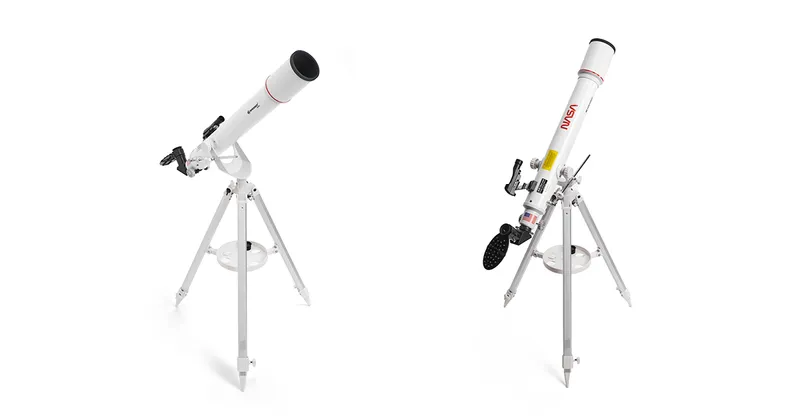
Unboxing
The Bresser ISA Space Exploration NASA 70/700 AZ telescope is supplied in a full-colour retail box that enhances the presentation of the outfit as a gift for a budding new astronomer.
But there is a glaring error in the printed text in several places.
The box erroneously describes the telescope as a ‘reflector telescope’, which it isn’t: it has a two-element lens design, known as an achromatic refractor.
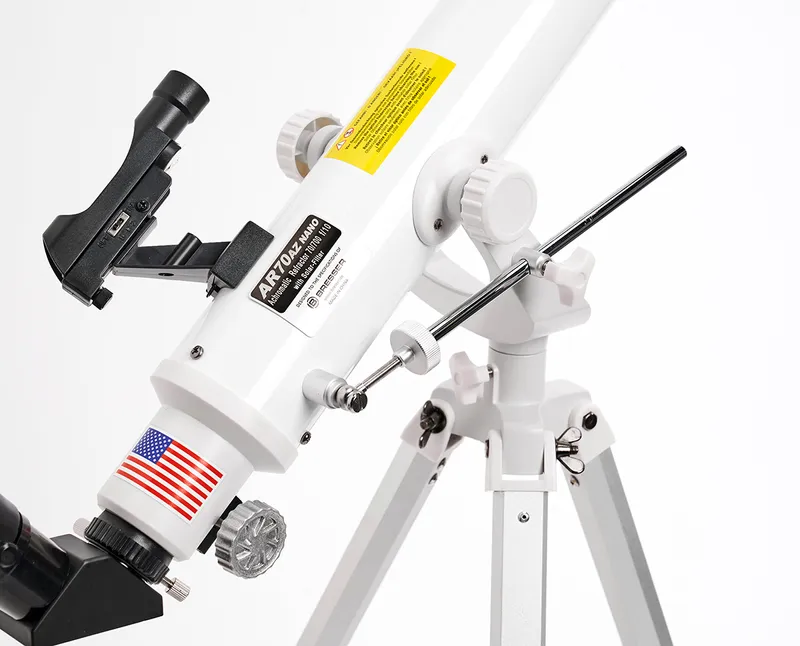
The optical tube has a high-gloss white finish with a red pinstripe around the base of the dew shield.
The optical tube and dew shield are made from seamless aluminium with a very matt black internal finish to reduce reflections.
To further reduce reflections, a single knife-edge baffle is employed within the tube.
In use, the dew shield did a commendable job of keeping dew from forming on the front element of the primary lens.
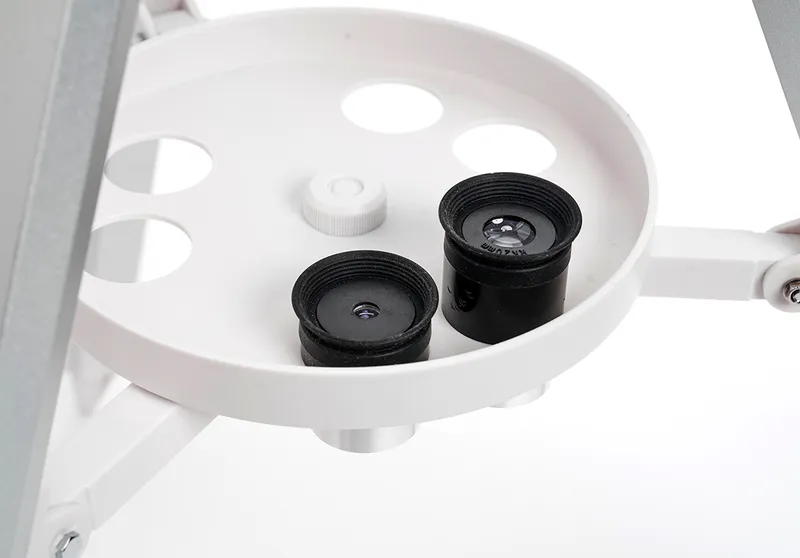
Setting up
Assembly of the various components was very quick, as the mount is pretty much fully assembled straight from the box and a pictorial assembly sheet is included for reference.
The Bresser ISA Space Exploration NASA 70/700 AZ telescope is attached to the mount via a yoke mounting, designed to allow observations at the zenith if required, with altitude adjustment made by tilting the telescope by hand and then clamping an adjustment rod into position.
The adjustment rod has a knurled thumbwheel with a long internal thread for making small altitude adjustments to centre objects vertically in the view.
Unfortunately, there is no fine adjustment for azimuth and the very action of adjusting focus causes the view to bounce all over the place, which was a bit frustrating at times.
To the rear of the optical tube, just forward of the focuser, there is a mounting bracket with a sprung retaining tab for the supplied red dot finder.
To assist further in the search for objects, there is a waterproof planisphere and a QR link to download the excellent Stellarium planetarium software for iPhone and Android smartphones or for Windows, Mac and Linux computers, for planning an evening’s observing session.
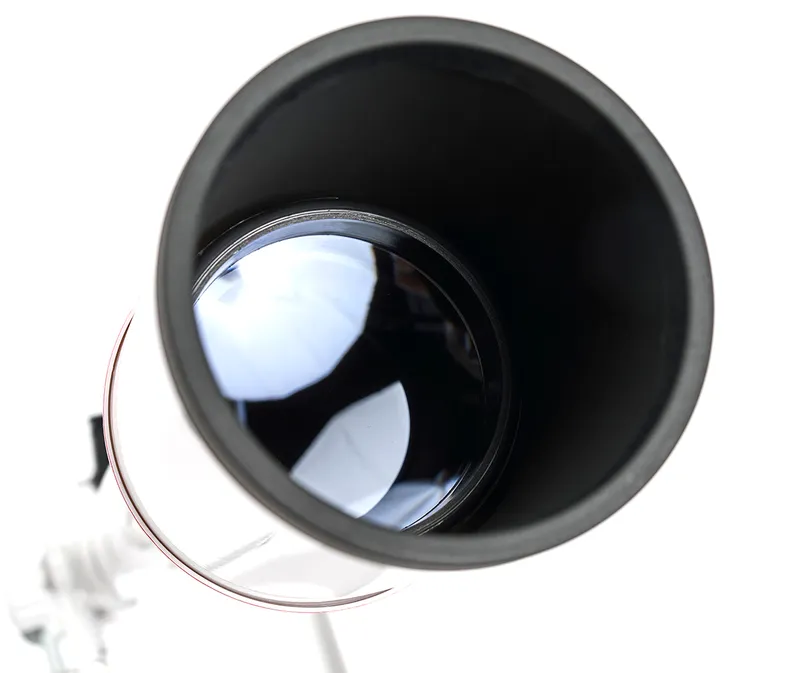
How it performs
We tested the Bresser ISA Space Exploration NASA 70/700 AZ telescope on a wide range of objects, including Jupiter, with its gorgeous pin-prick Galilean Moons, and Saturn, which was just a few days past opposition, clearly observing its ringed nature.
Views of the Moon were very enjoyable despite a small amount of chromatic aberration visible on the limb.
We also viewed the Sun (using the supplied solar filter) and were delighted to easily observe sunspots AR3415, AR3417, AR3421, AR3422 and AR3423.
With some Solar System objects in the bag, we went in search of deep-sky targets, observing the colour-contrasting binary Albireo in Cygnus, globular clusters M13 and M92, and the lovely bright star Vega.
We also observed Epsilon Lyrae, the well-known Double Double multiple star system in Lyra, and tracked down the large Andromeda Galaxy, M31.
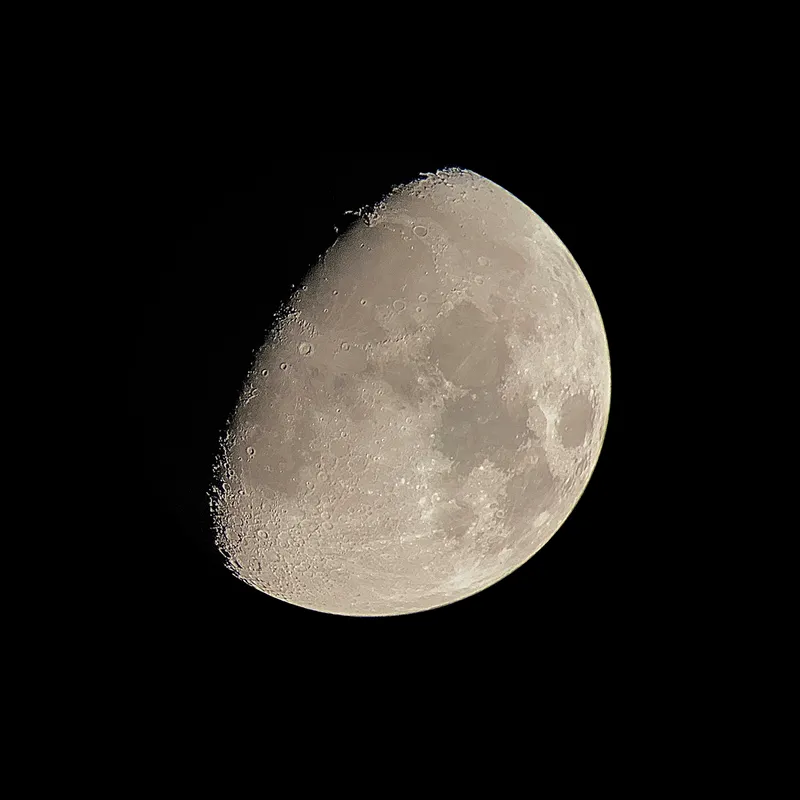
With the review period encompassing late summer, we used the bright star Deneb in Cygnus as our optical test star and found good star shapes out to just over 80% of the field of view using the 20mm eyepiece.
Included in the kit is an eyepiece projection adaptor for a smartphone that we used to capture images of the Moon and Sun with our iPhone 5s, using the 20mm eyepiece for whole-disc images and the 9mm eyepiece for zooming in a little closer.
We found the adaptor to be rather fiddly to use, especially when imaging the Sun, but with a bit of patience it did work.
We were generally pleased with the performance of Bresser’s ISA Space Exploration NASA 70/700 AZ telescope.
Although soon outgrown, it will make an ideal first telescope for astronomy beginners on a tight budget.
Solar observing with the Bresser ISA Space Exploration NASA 70/700 AZ

The Bresser ISA Space Exploration NASA 70/700 AZ telescope comes with a front-mounted solar filter.
It is imperative that filters like this are securely attached to the front of the telescope with no risk of them being dislodged, to ensure the protection of your eyesight.
This filter is securely mounted within a yellow plastic ring that in turn fits firmly inside the front of the dew shield, making it very safe if it’s used carefully (and only under adult supervision if children are going to be using the telescope).
This type of filter has a reflective surface that cuts out about 99.99% of the light passing through it.
Such filters allow you to observe the Sun’s visible surface, the photosphere, in ‘white light’, making it possible to discern the texture of this layer, known as granulation, and features like sunspots.
In common with some similar filters, this one has an additional layer that imparts a false yellow-orange tinge to the Sun, to produce an image with the colour that many observers would expect to see.
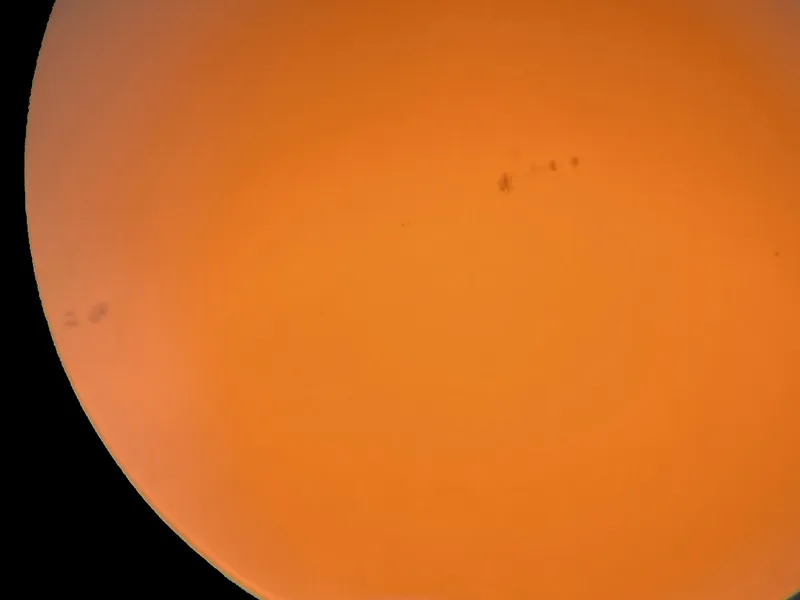
Bresser ISA Space Exploration NASA 70/700 AZ 5 best features
Optics
The achromatic doublet glass lens has a single coating of magnesium fluoride, representing the minimum treatment required to combat unwanted reflections. The two lens elements in this design are made from different glass types and are designed to minimise the coloured halos around bright objects caused by chromatic aberration.
Eyepieces and focuser
The 20mm and 9mm Kellner eyepieces provide magnification of 35x and 77x respectively and include fold-down eyecups and filter threads. The 20mm was perfectly adequate for beginners, though the 9mm was not quite as good. The simple, plastic, single-speed, rack and pinion focuser is pleasantly smooth to use.
Yoke mount
At the top of the tripod is a traditional yoke mount that supports the telescope so that it can move both vertically and horizontally. The yoke design is raked rearwards towards the eyepiece and focuser so that the telescope can be aimed at objects high in the sky without fouling the tripod legs.
Tripod
The aluminium and plastic tripod is extremely light to transport but stable enough for a small telescope like this. There is a plastic tray-style leg spreader that has useful cut-outs for your eyepieces and other accessories. The aluminium legs allow for height adjustment of the telescope tube from 73cm to 115cm.
Red dot finder
The rather basic red dot finder supplied with the telescope has a dual-intensity LED. Its virtual position on the sky can be adjusted using horizontal and vertical adjustment thumb screws. However, the finder’s lightweight construction and the way it’s mounted made it rather flimsy in use.
Key stats
- Price: £119.99
- Optics: 70mm achromatic refractor
- Focal length: 700mm, f/10
- Mount: Altazimuth (manual)
- Extras: Red dot finder, 9mm and 20mm eyepieces, 1.25-inch star diagonal, smartphone camera adaptor, planetarium software download, solar filter, instruction sheet, planisphere
- Weight: 2.5kg
- Supplier: Telescope House
- Tel: 01342 837098
- www.telescopehouse.com
This review appeared in the December 2023 issue of BBC Sky at Night Magazine
